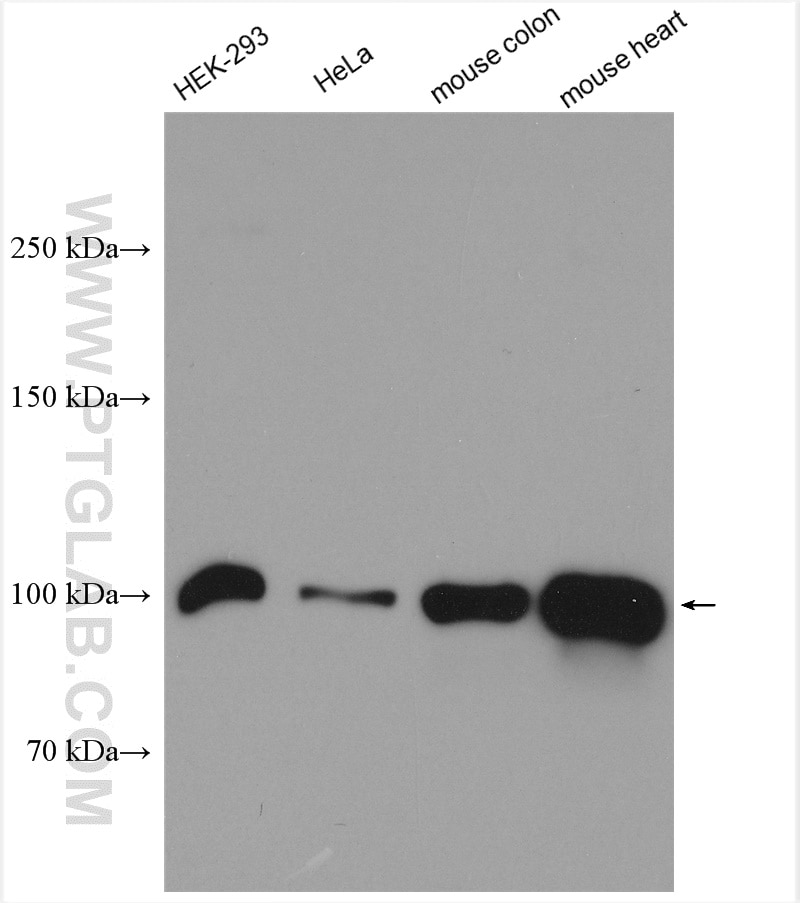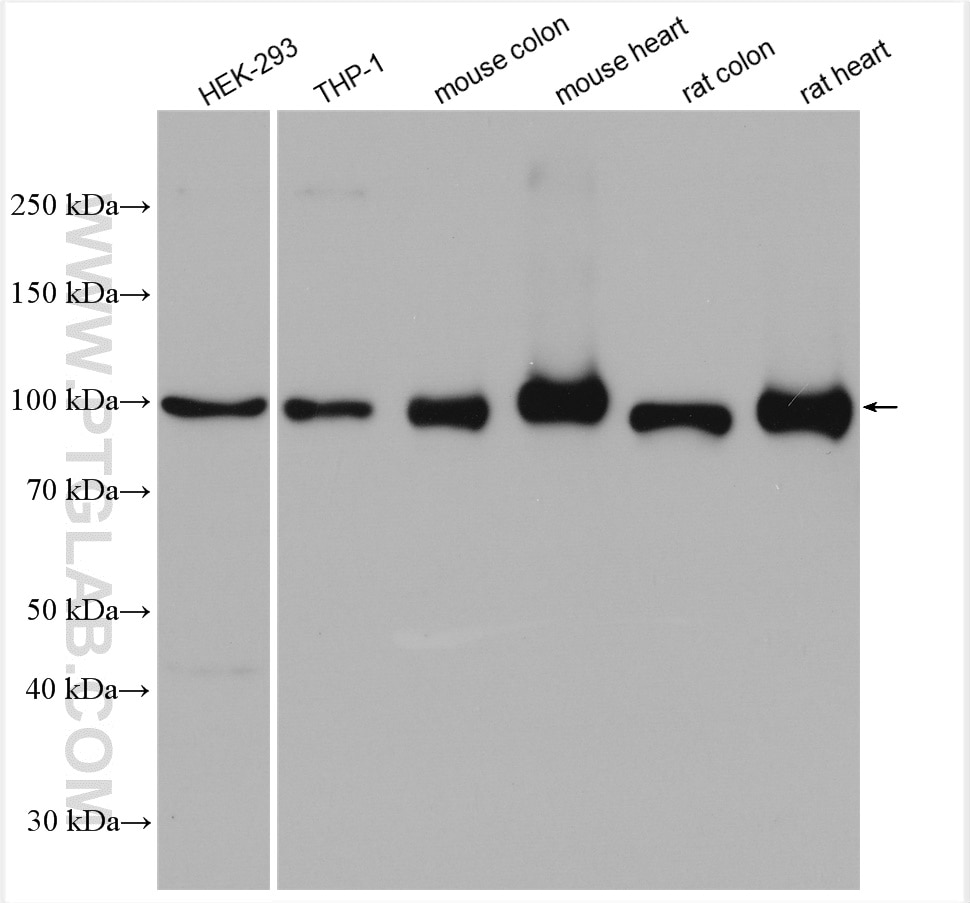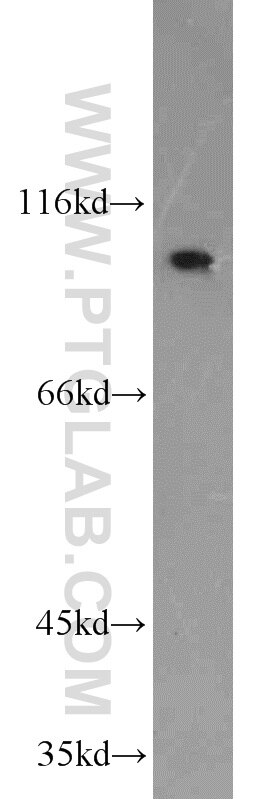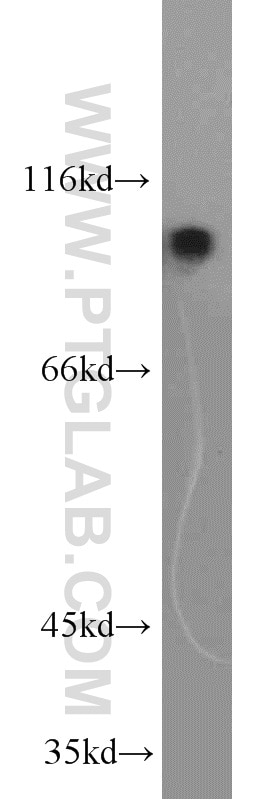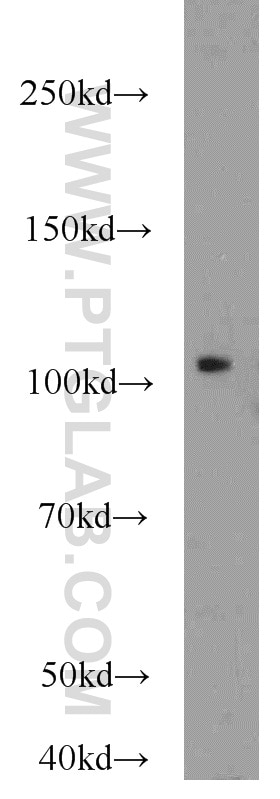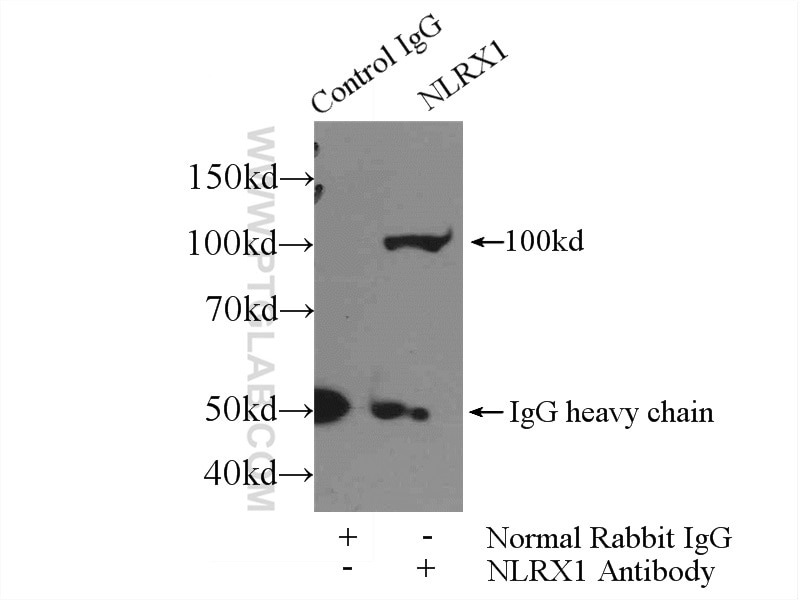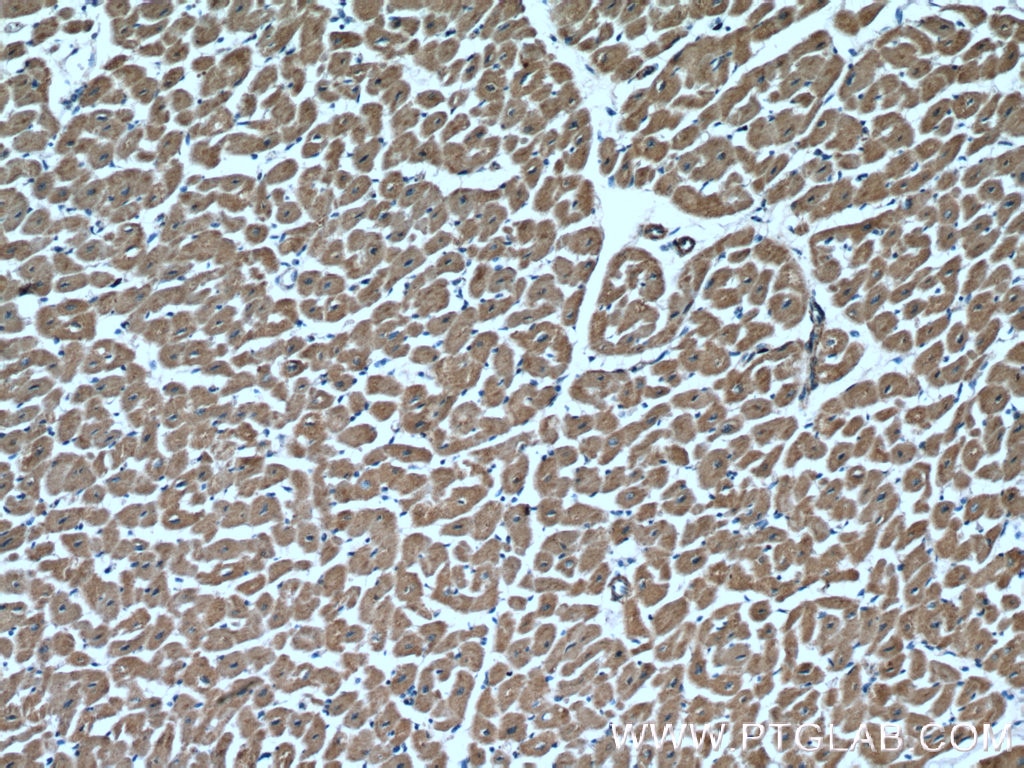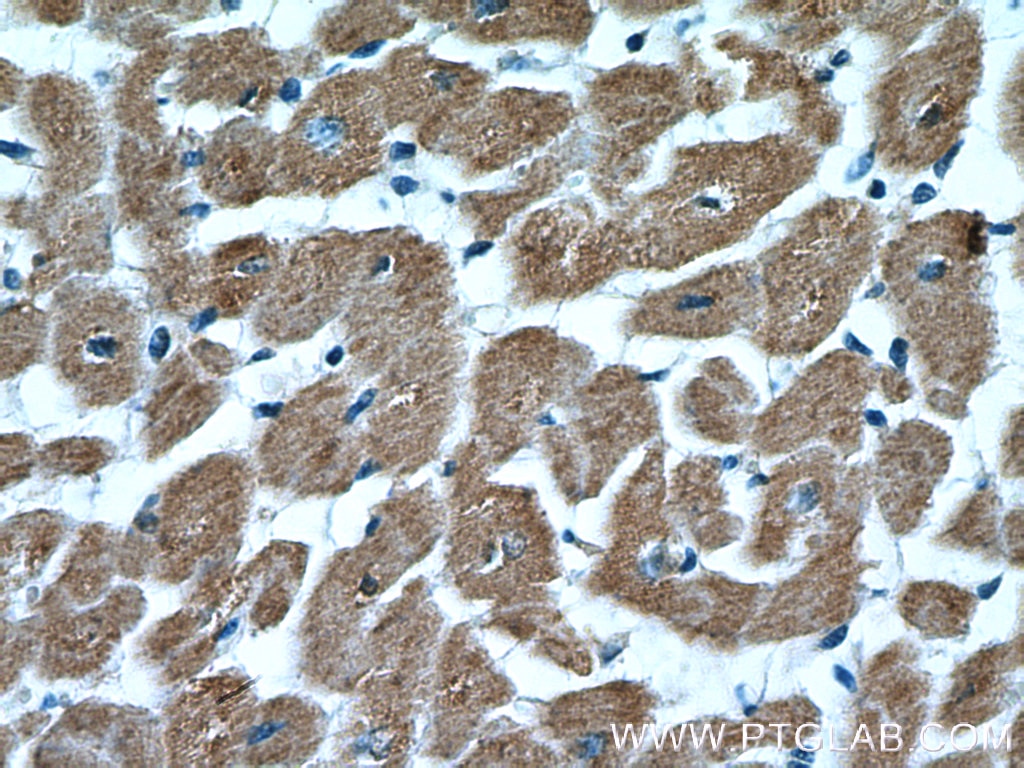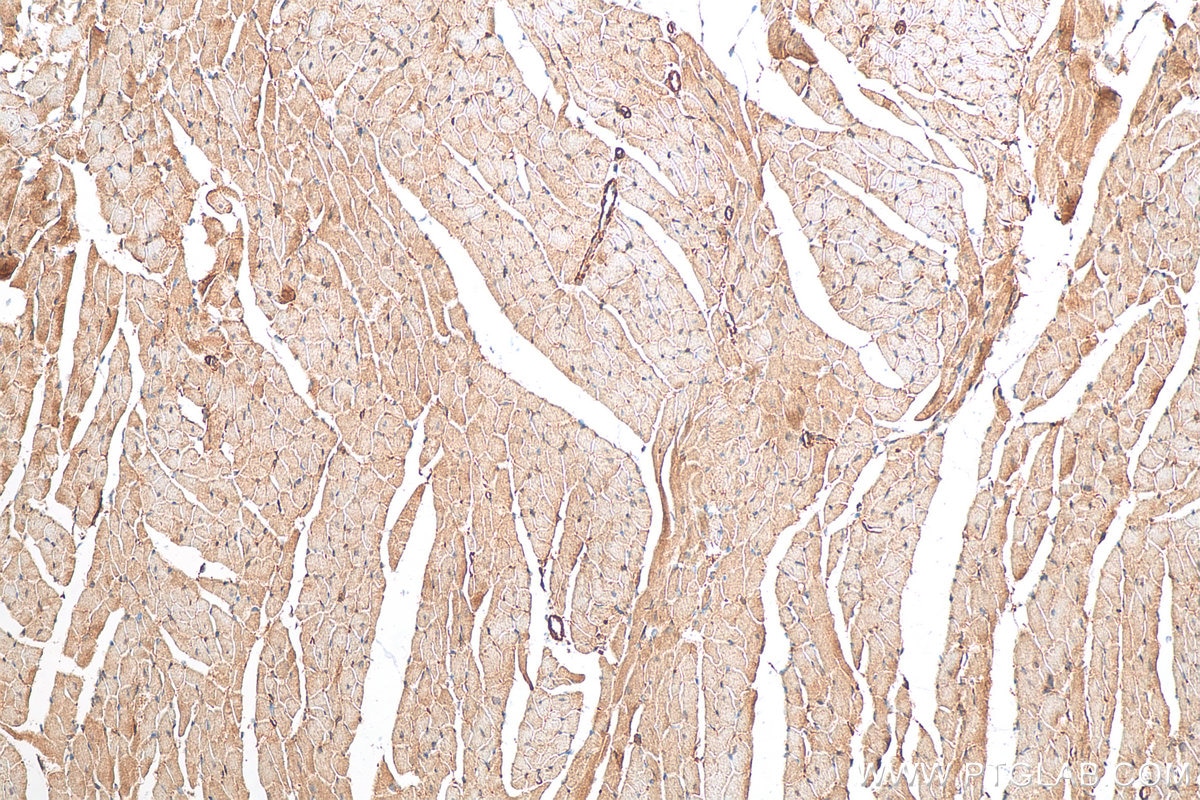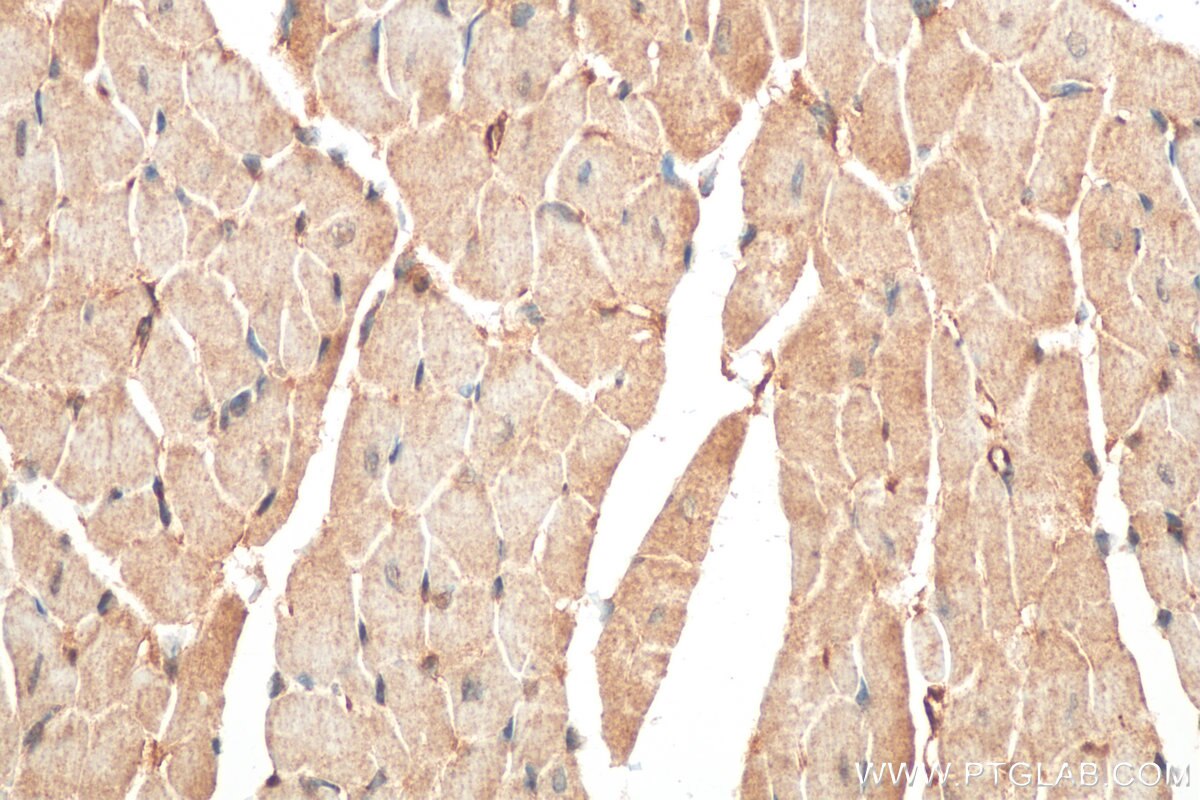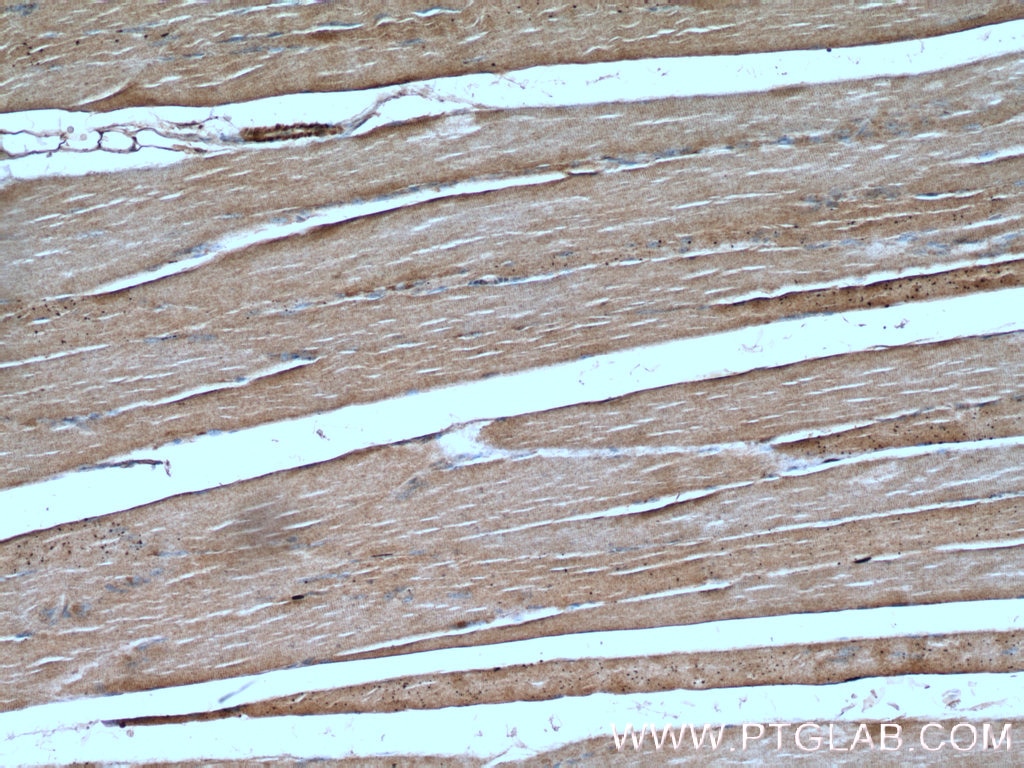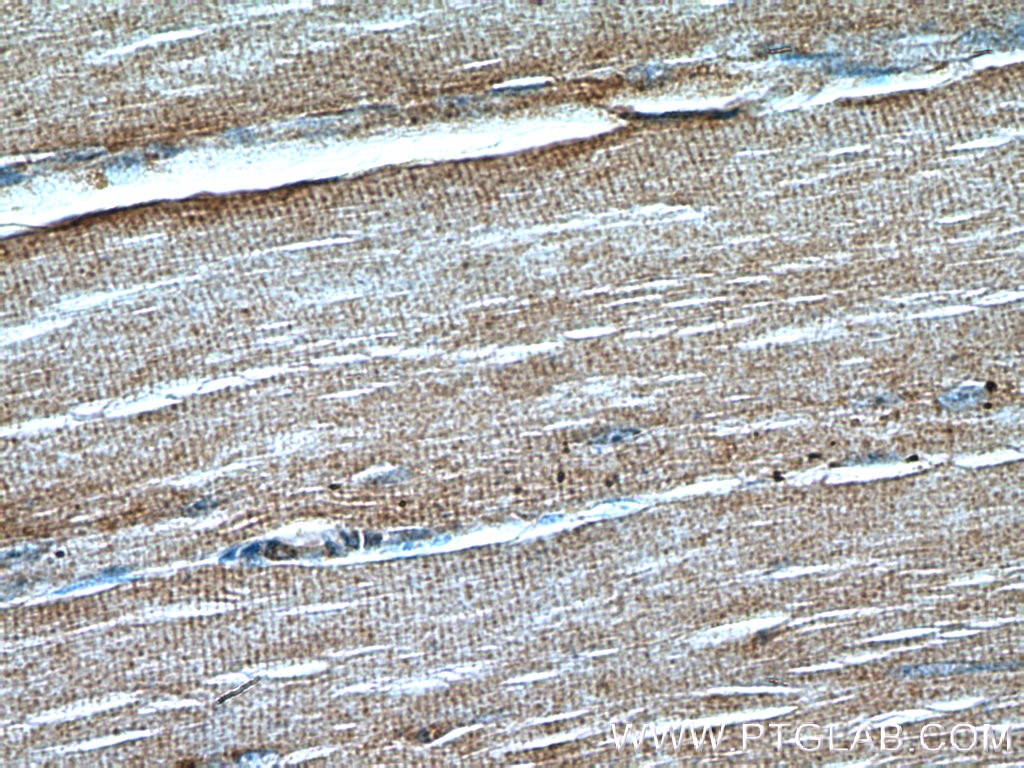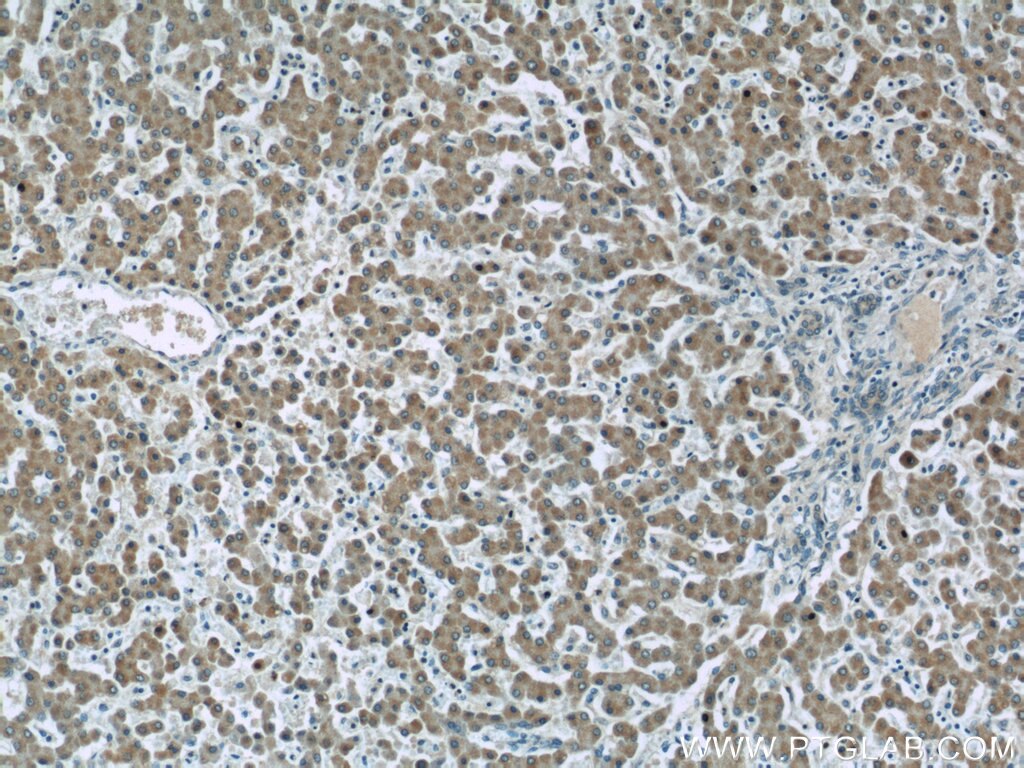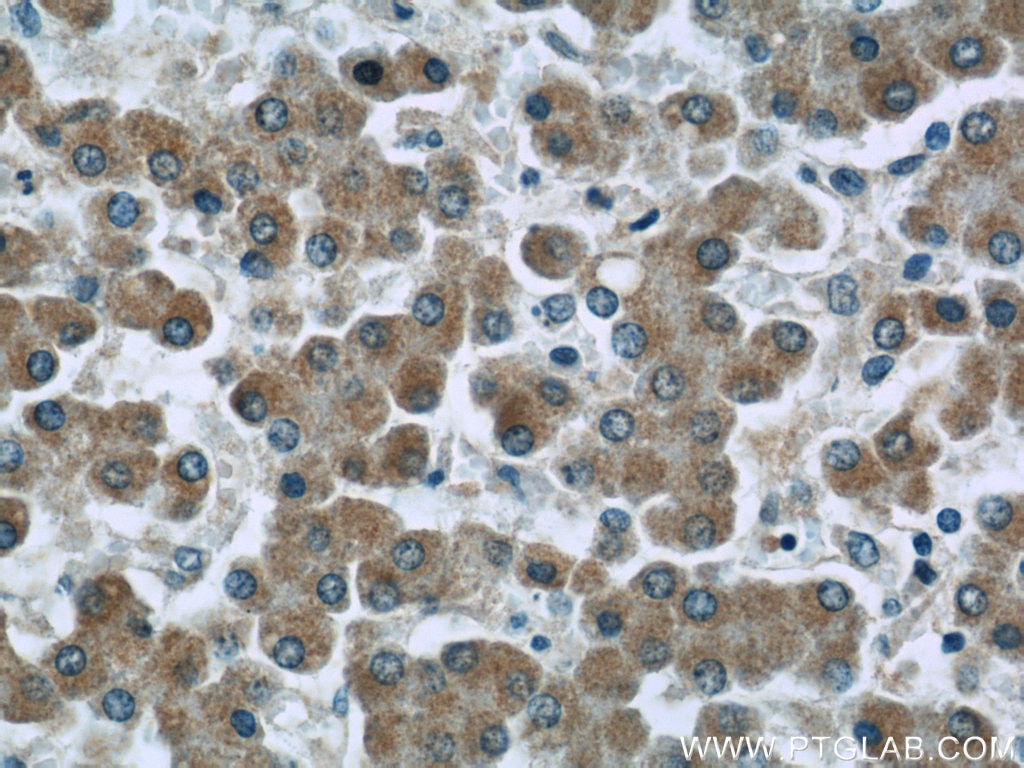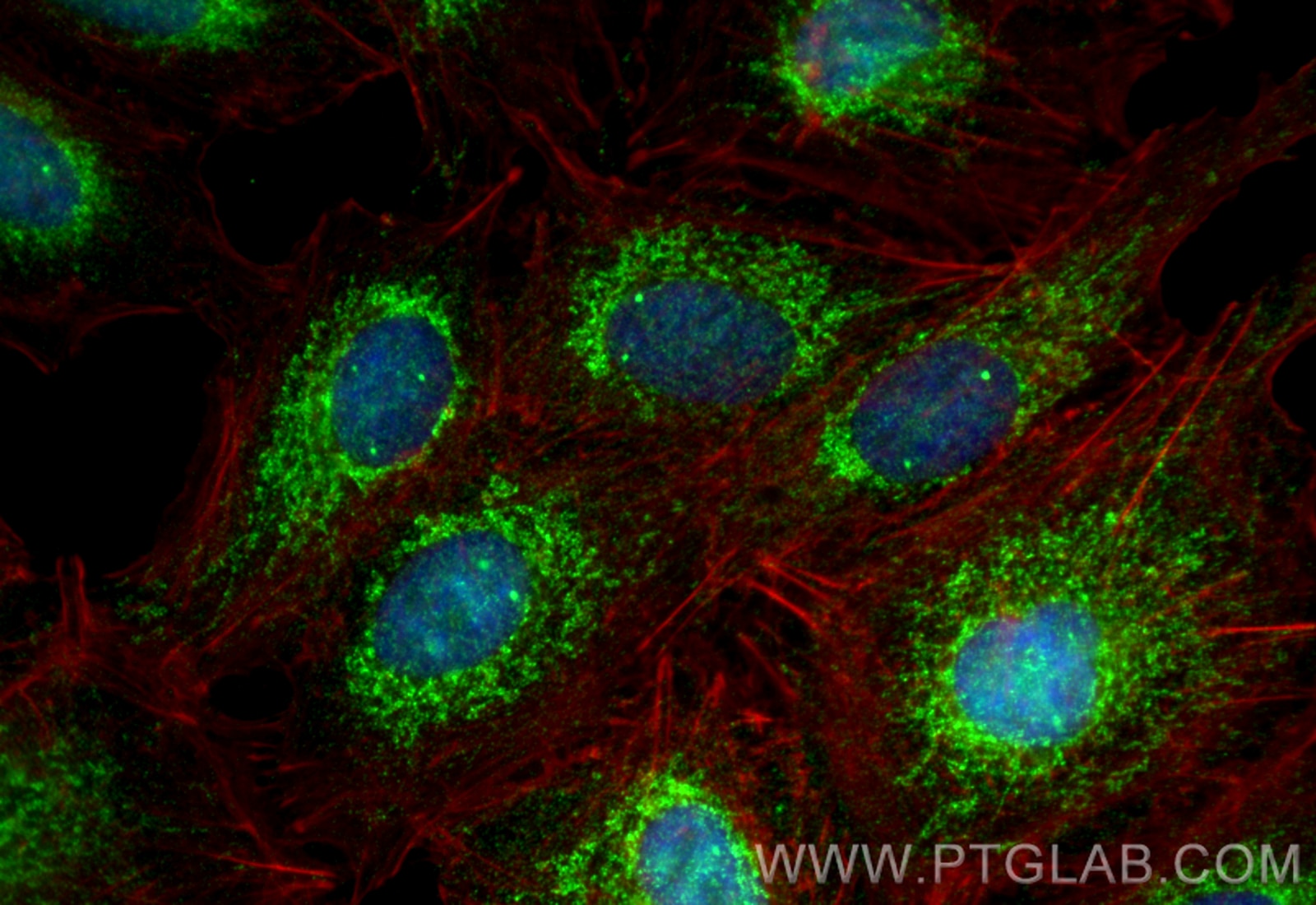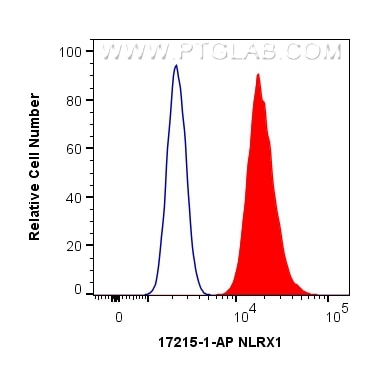- Phare
- Validé par KD/KO
Anticorps Polyclonal de lapin anti-NLRX1
NLRX1 Polyclonal Antibody for WB, IHC, IF/ICC, FC (Intra), IP, ELISA
Hôte / Isotype
Lapin / IgG
Réactivité testée
Humain, rat, souris
Applications
WB, IHC, IF/ICC, FC (Intra), IP, CoIP, ELISA
Conjugaison
Non conjugué
N° de cat : 17215-1-AP
Synonymes
Galerie de données de validation
Applications testées
| Résultats positifs en WB | cellules HEK-293, cellules HeLa, cellules HepG2, cellules MCF-7, cellules THP-1, tissu cardiaque de rat, tissu cardiaque de souris, tissu de côlon de rat, tissu de côlon de souris, tissu de muscle squelettique de souris |
| Résultats positifs en IP | tissu cardiaque de souris |
| Résultats positifs en IHC | tissu cardiaque humain, tissu cardiaque de souris, tissu de muscle squelettique humain, tissu hépatique humain il est suggéré de démasquer l'antigène avec un tampon de TE buffer pH 9.0; (*) À défaut, 'le démasquage de l'antigène peut être 'effectué avec un tampon citrate pH 6,0. |
| Résultats positifs en IF/ICC | cellules A549, |
| Résultats positifs en FC (Intra) | cellules HepG2 |
Dilution recommandée
| Application | Dilution |
|---|---|
| Western Blot (WB) | WB : 1:1000-1:8000 |
| Immunoprécipitation (IP) | IP : 0.5-4.0 ug for 1.0-3.0 mg of total protein lysate |
| Immunohistochimie (IHC) | IHC : 1:50-1:500 |
| Immunofluorescence (IF)/ICC | IF/ICC : 1:50-1:500 |
| Flow Cytometry (FC) (INTRA) | FC (INTRA) : 0.40 ug per 10^6 cells in a 100 µl suspension |
| It is recommended that this reagent should be titrated in each testing system to obtain optimal results. | |
| Sample-dependent, check data in validation data gallery | |
Applications publiées
| KD/KO | See 8 publications below |
| WB | See 23 publications below |
| IHC | See 3 publications below |
| IF | See 8 publications below |
| IP | See 1 publications below |
| CoIP | See 2 publications below |
Informations sur le produit
17215-1-AP cible NLRX1 dans les applications de WB, IHC, IF/ICC, FC (Intra), IP, CoIP, ELISA et montre une réactivité avec des échantillons Humain, rat, souris
| Réactivité | Humain, rat, souris |
| Réactivité citée | rat, Humain, souris |
| Hôte / Isotype | Lapin / IgG |
| Clonalité | Polyclonal |
| Type | Anticorps |
| Immunogène | NLRX1 Protéine recombinante Ag11000 |
| Nom complet | NLR family member X1 |
| Masse moléculaire calculée | 975 aa, 108 kDa |
| Poids moléculaire observé | 100-110 kDa |
| Numéro d’acquisition GenBank | BC013199 |
| Symbole du gène | NLRX1 |
| Identification du gène (NCBI) | 79671 |
| Conjugaison | Non conjugué |
| Forme | Liquide |
| Méthode de purification | Purification par affinité contre l'antigène |
| Tampon de stockage | PBS with 0.02% sodium azide and 50% glycerol |
| Conditions de stockage | Stocker à -20°C. Stable pendant un an après l'expédition. L'aliquotage n'est pas nécessaire pour le stockage à -20oC Les 20ul contiennent 0,1% de BSA. |
Informations générales
NLRX1 (Nucleotide-binding oligomerization domain, leucine-rich repeat containing X1) is a member of the NOD-like receptor (NLR) family and is unique among NLRs due to its localization to the mitochondrial matrix. NLRX1 is a negative regulator of innate immunity, particularly in viral infections. It interacts with the mitochondrial antiviral signaling protein (MAVS) to attenuate antiviral responses. NLRX1 has been implicated in various diseases, including multiple sclerosis, colorectal cancer, and ischemia-reperfusion injury. Its role in controlling inflammation and mitochondrial function makes it a potential therapeutic target.
Protocole
| Product Specific Protocols | |
|---|---|
| WB protocol for NLRX1 antibody 17215-1-AP | Download protocol |
| IHC protocol for NLRX1 antibody 17215-1-AP | Download protocol |
| IF protocol for NLRX1 antibody 17215-1-AP | Download protocol |
| IP protocol for NLRX1 antibody 17215-1-AP | Download protocol |
| Standard Protocols | |
|---|---|
| Click here to view our Standard Protocols |
Publications
| Species | Application | Title |
|---|---|---|
Mol Cell Mitochondrial protein import stress regulates the LC3 lipidation step of mitophagy through NLRX1 and RRBP1.
| ||
Cell Death Differ NLRX1 mediated impaired microglial phagocytosis of NETs in cerebral ischemia and reperfusion injury | ||
J Exp Med NLRX1 dampens oxidative stress and apoptosis in tissue injury via control of mitochondrial activity.
| ||
